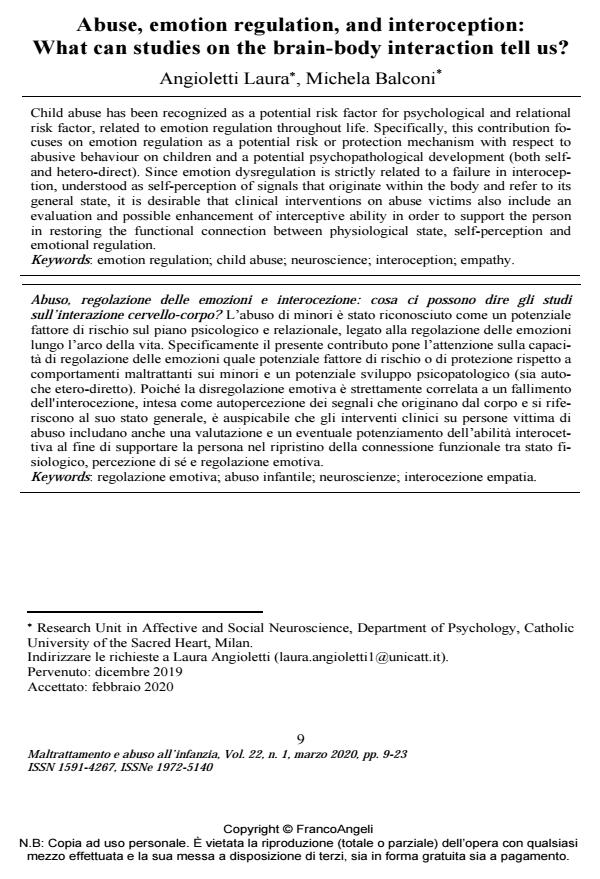Abuse, emotion regulation, and interoception: What can studies on the brain-body interaction tell us?
Journal title MALTRATTAMENTO E ABUSO ALL’INFANZIA
Author/s Laura Angioletti, Michela Balconi
Publishing Year 2020 Issue 2020/1
Language English Pages 15 P. 9-23 File size 306 KB
DOI 10.3280/MAL2020-001002
DOI is like a bar code for intellectual property: to have more infomation
click here
Below, you can see the article first page
If you want to buy this article in PDF format, you can do it, following the instructions to buy download credits

FrancoAngeli is member of Publishers International Linking Association, Inc (PILA), a not-for-profit association which run the CrossRef service enabling links to and from online scholarly content.
Child abuse has been recognized as a potential risk factor for psychological and relational risk factor, related to emotion regulation throughout life. Specifically, this contribution focuses on emotion regulation as a potential risk or protection mechanism with respect to abusive behav-iour on children and a potential psychopathological development (both self- and hetero-direct). Since emotion dysregulation is strictly related to a failure in interoception, understood as self-perception of signals that originate within the body and refer to its general state, it is desirable that clinical interventions on abuse victims also include an evaluation and possible enhancement of interceptive ability in order to support the person in restoring the functional connection between physiological state, self-perception and emotional regulation.
Keywords: Emotion regulation; child abuse; neuroscience; interoception; empathy
Laura Angioletti, Michela Balconi, Abuse, emotion regulation, and interoception: What can studies on the brain-body interaction tell us? in "MALTRATTAMENTO E ABUSO ALL’INFANZIA" 1/2020, pp 9-23, DOI: 10.3280/MAL2020-001002